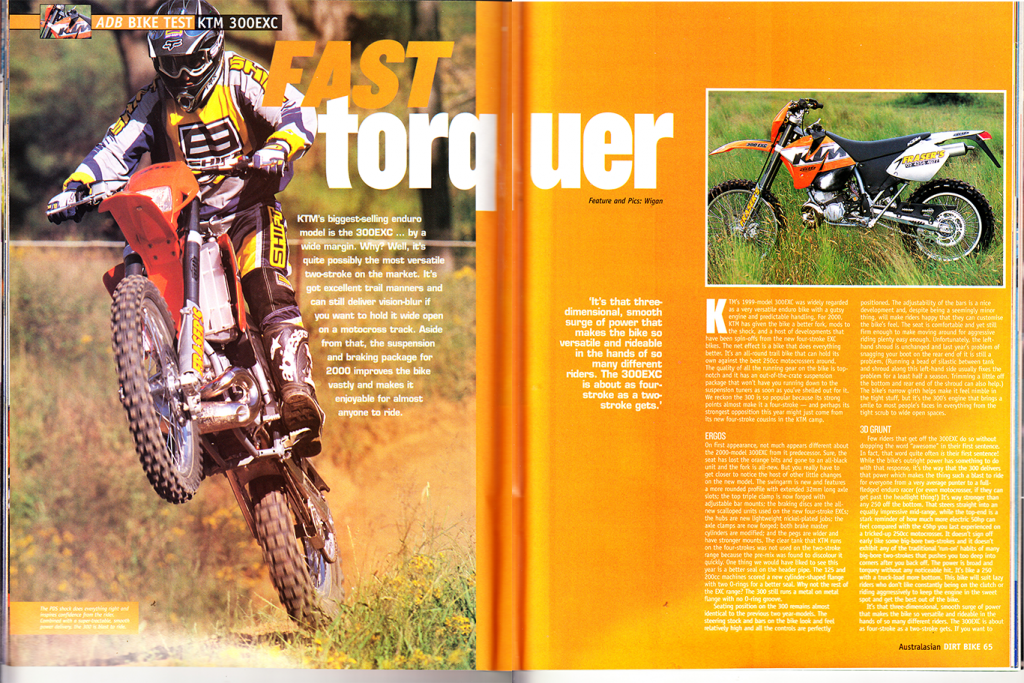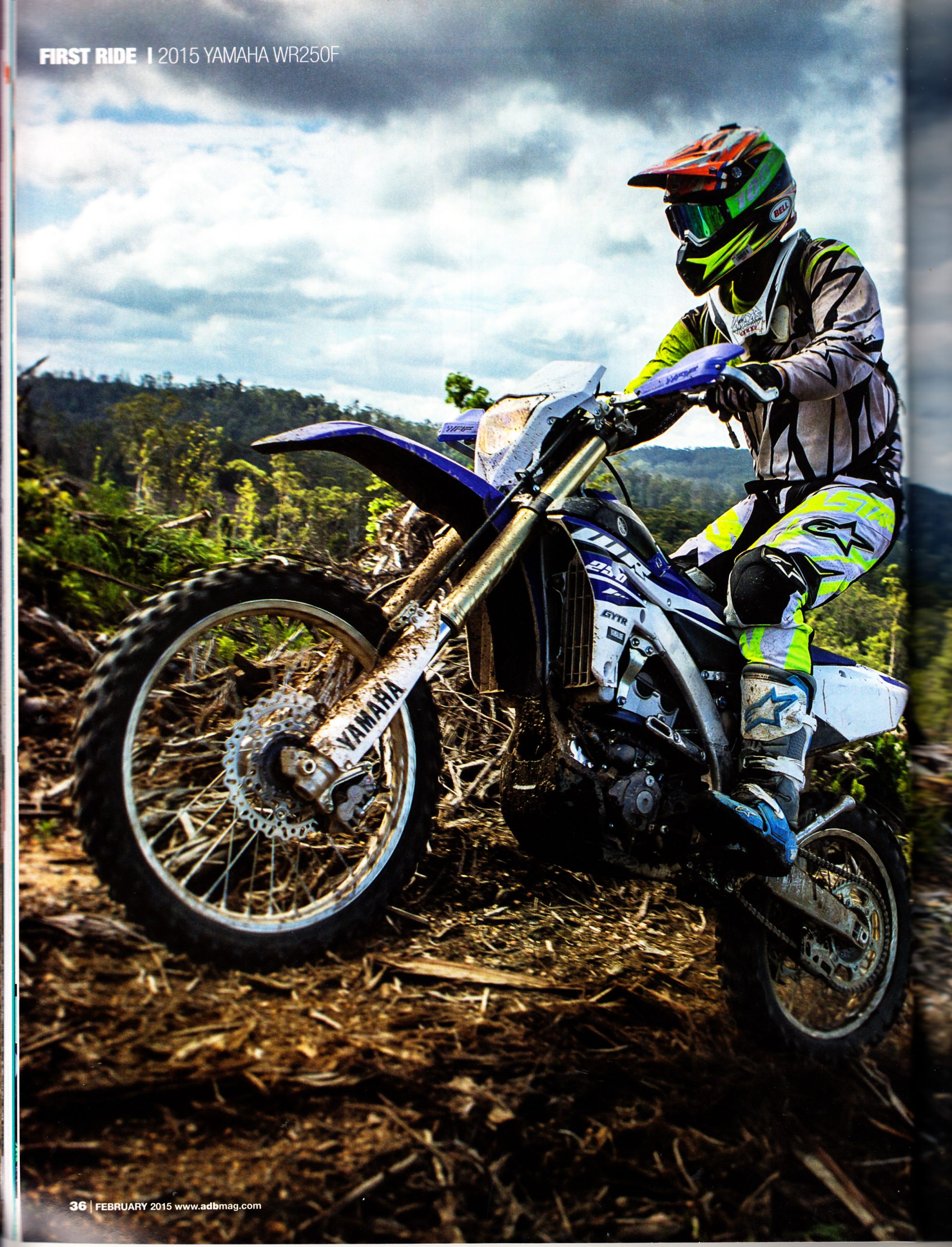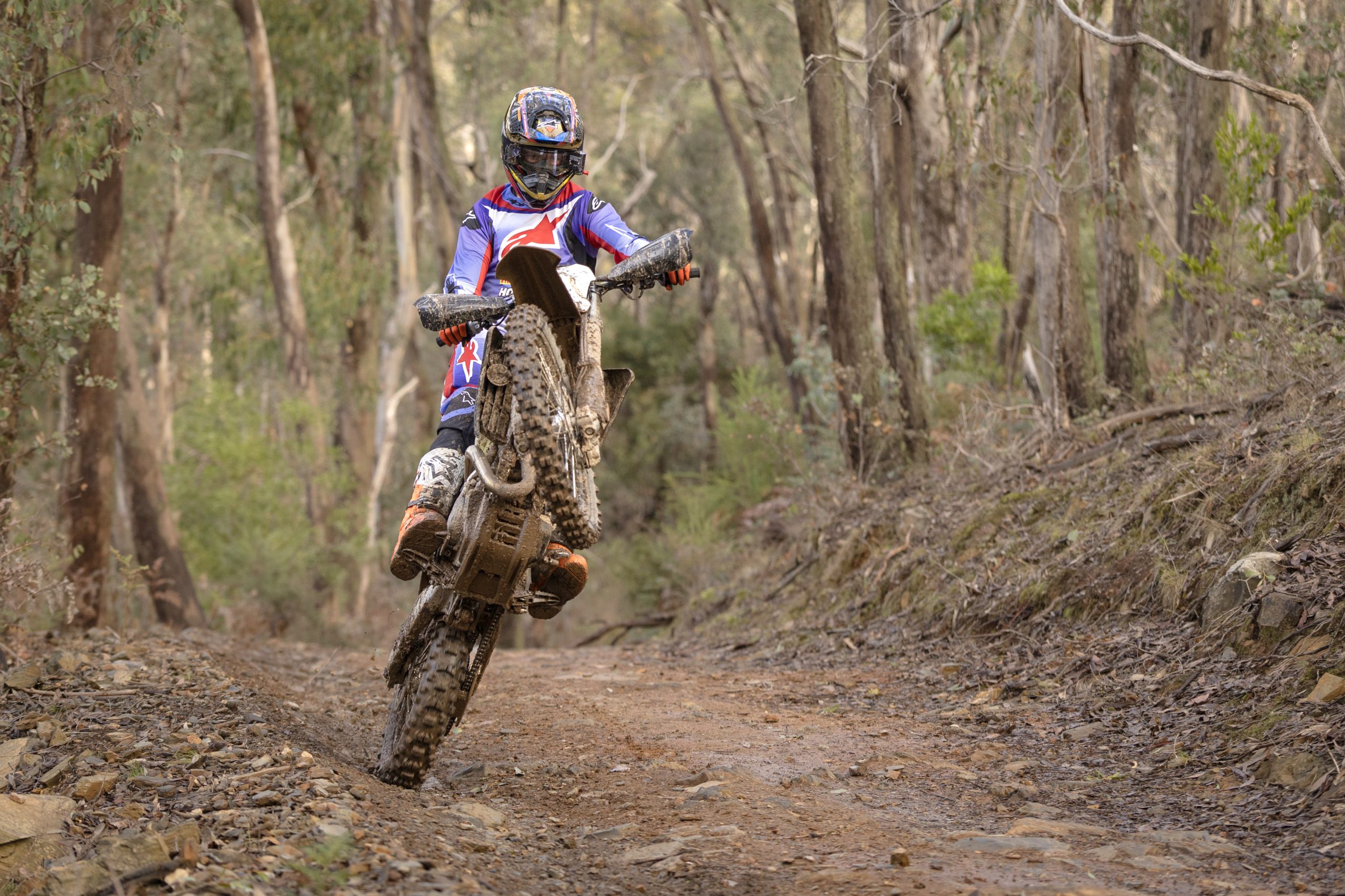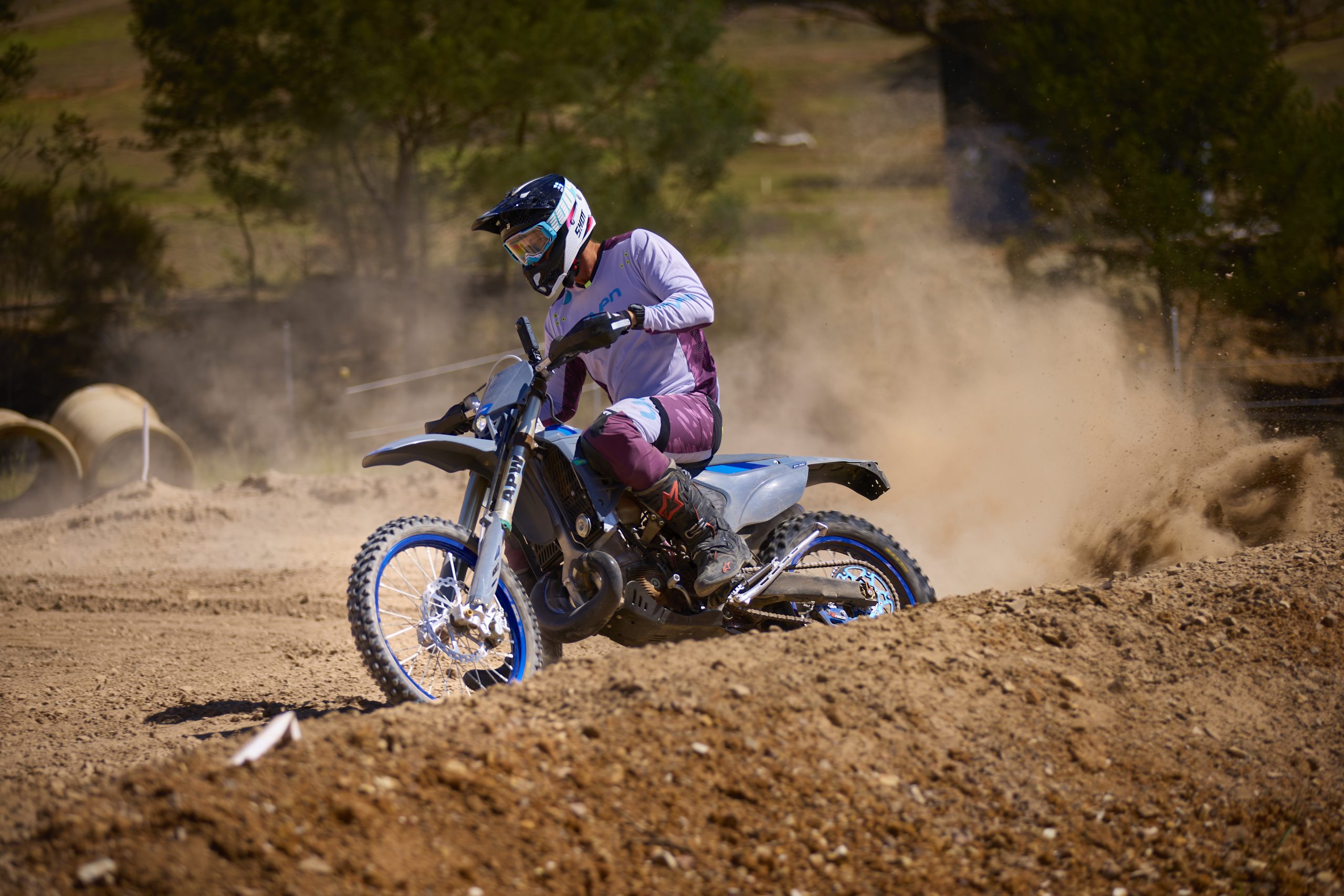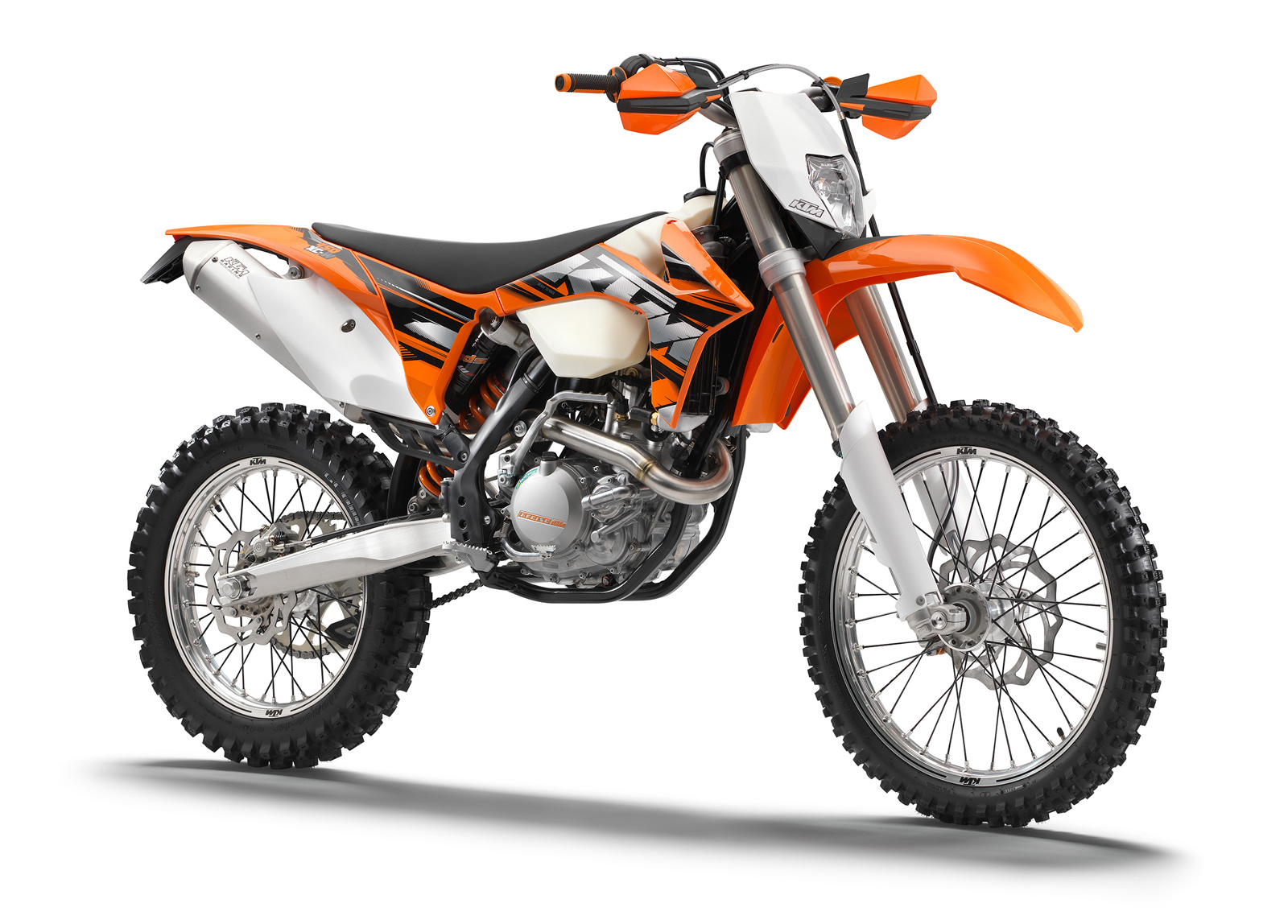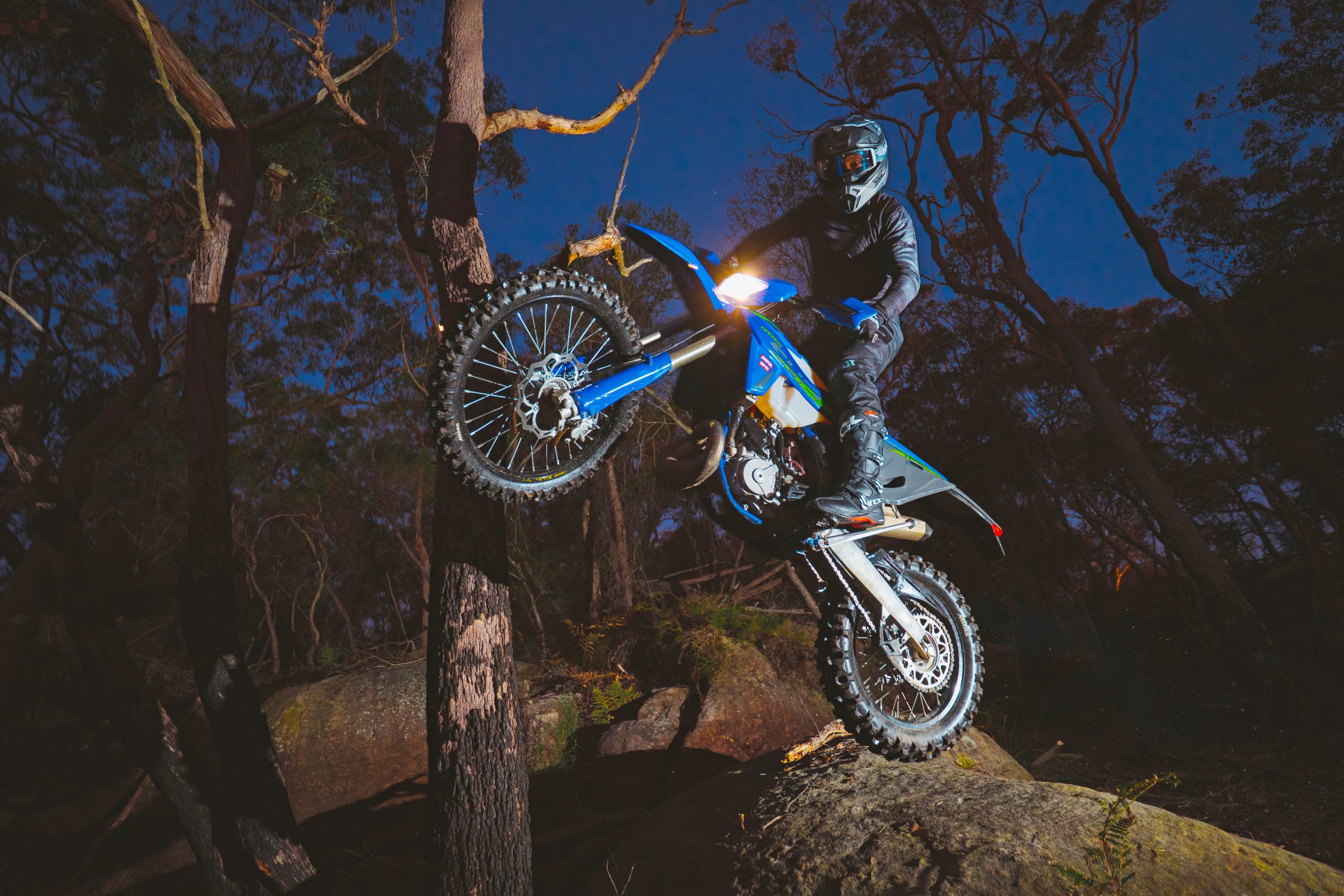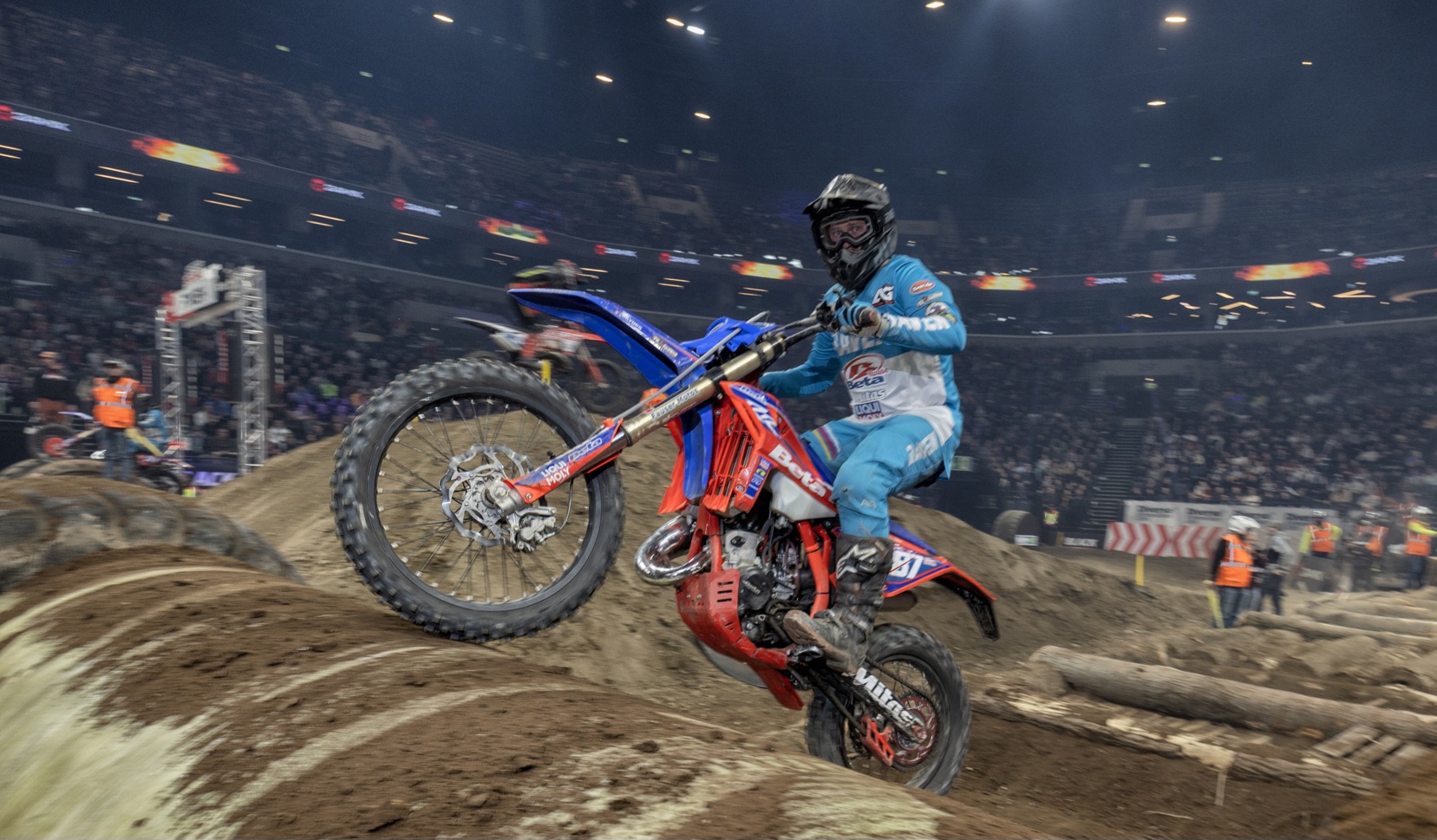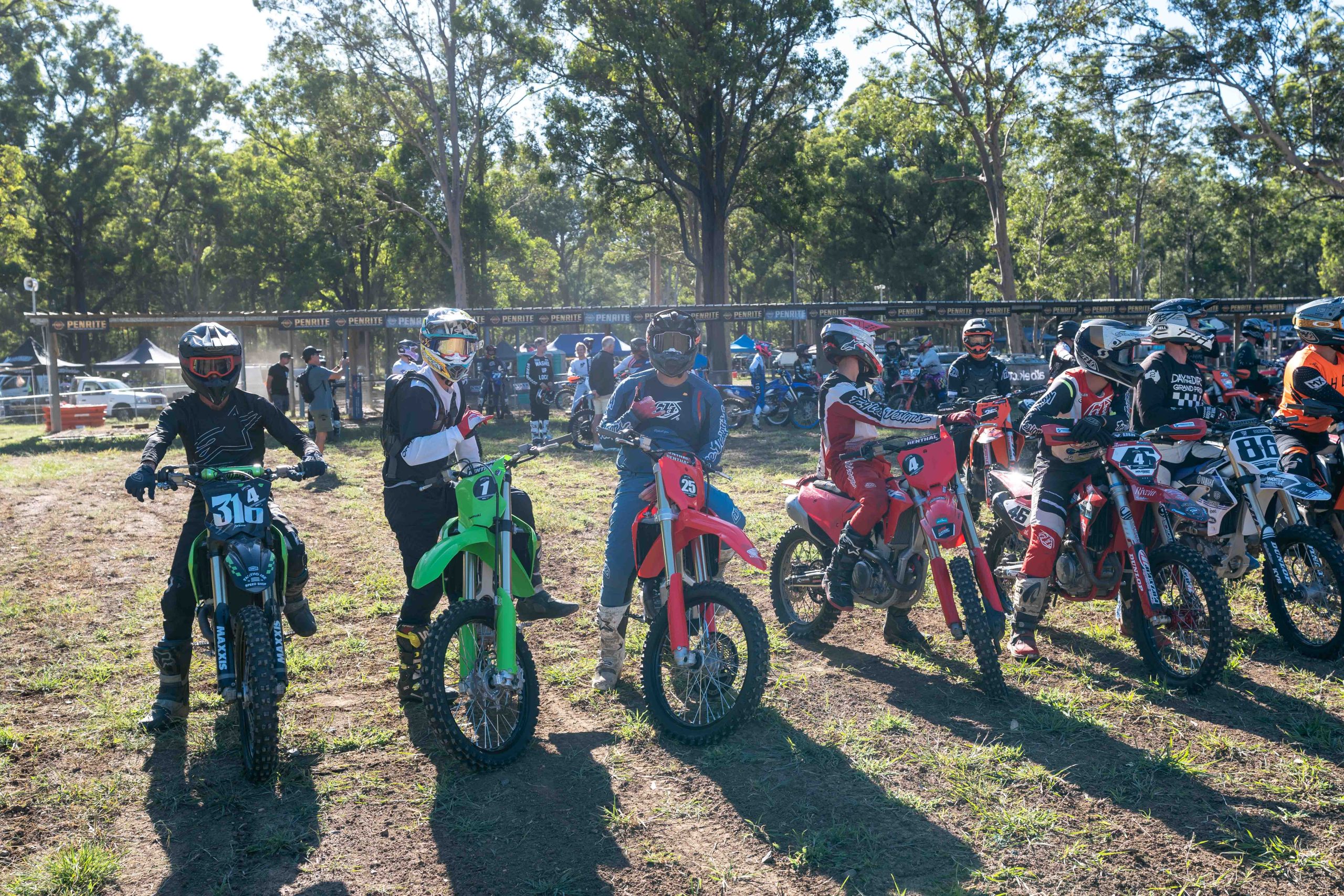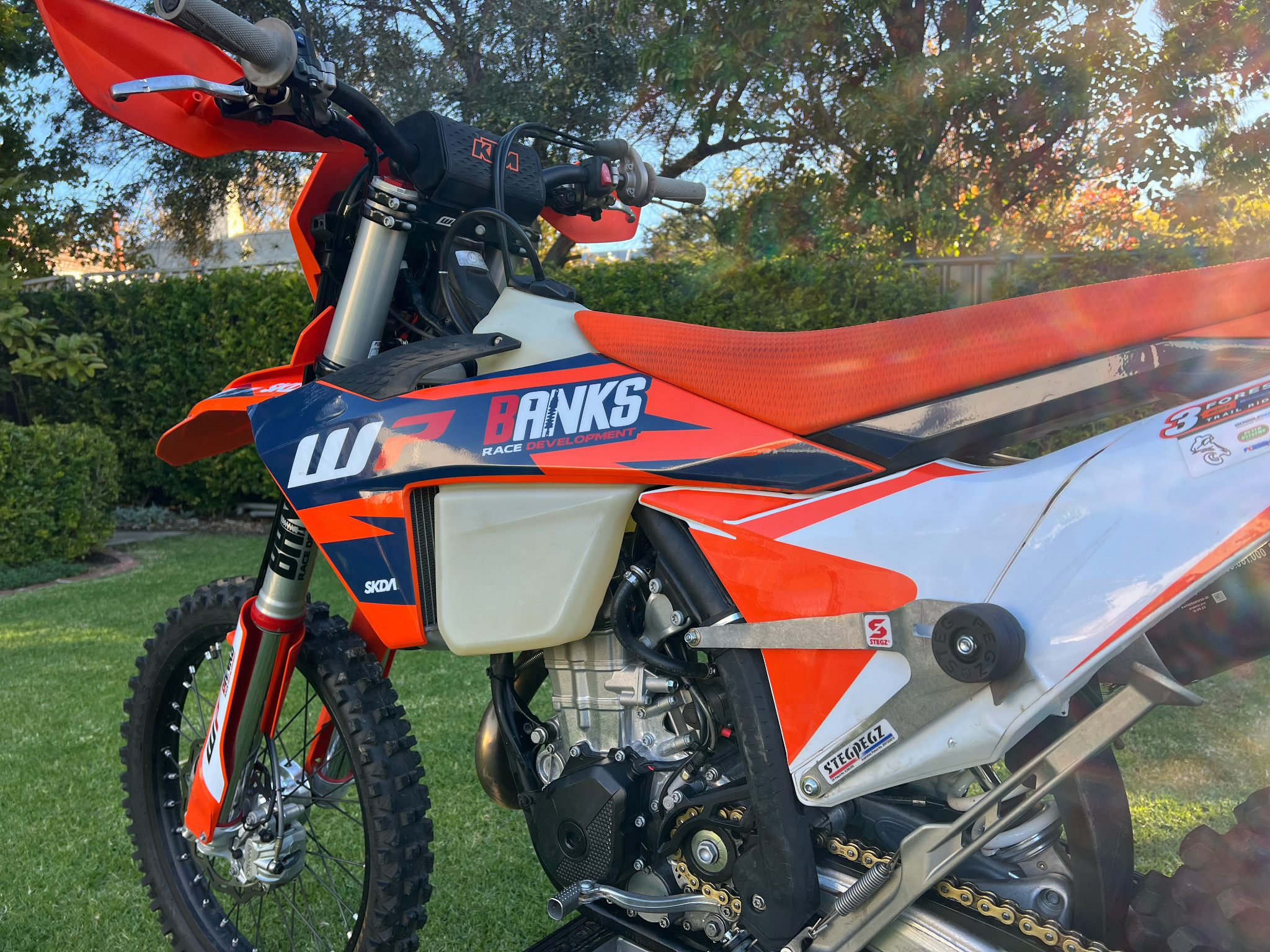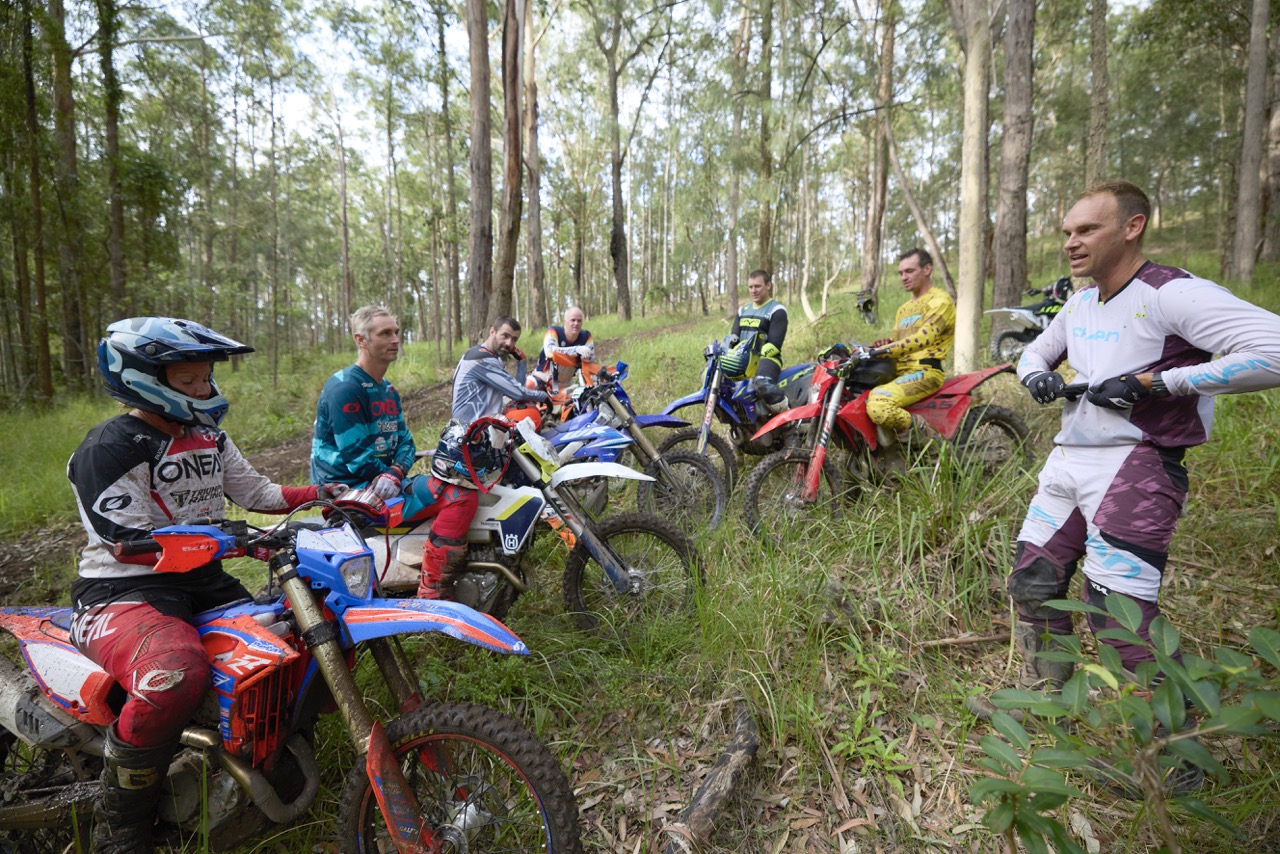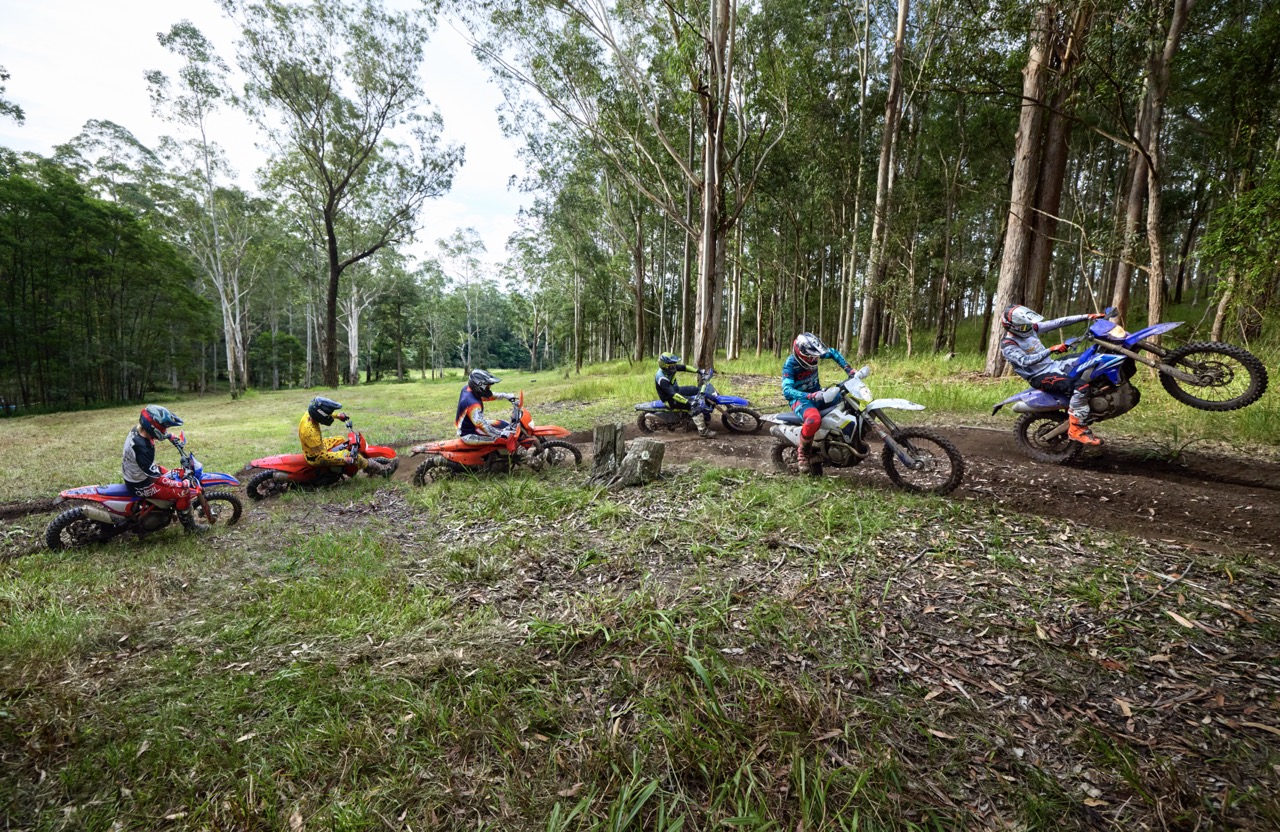“It’s that three-dimensional, smooth surge of power that makes the bike so versatile and rideable in the hands of so many different riders. The 300EXC is about as four-stroke as a two-stroke gets.” This was the introduction to a test of the 2000 KTM 300EXC nearly 20 years ago.
Changes from the 1999 model, unlike the 2020 model tested in this issue, were minor but they were there if you looked closely. The swingarm sported longer axle slots, the top triple-clamp was a forged unit with adjustable handlebar mounts, the footpegs were wider with stronger mounting brackets, the hubs were nickel-plated and the brake discs were the wave type used on the four-stroke models.
The liquid-cooled 297cc motor was strong off the bottom with an impressive midrange and didn’t sign off early up top or run on like some big-bore smokers that could push a rider too deep into a corner. The power was broad and torquey without any noticeable hit and was said to suit lazy riders who didn’t like constantly abusing the clutch or having to ride aggressively to keep the engine in its sweet spot.
For those who wanted to ride the odd motocross it only took a quick tweak of the power valve spring, half a turn out, and the bike delivered a much harder hit in the mid-range with more top-end, but at the expense of bottom-end power. Trailriders could go the other way to put more preload on the power valve for more bottom-end grunt at the expense of a top-end hit that they might rarely use or need anyway.
Spark and fuel for all this performance was supplied by a Kokusan digital 2K-3 ignition and Keihin PWK38 AG carburettor and it travelled through a five-speed gearbox and a hydraulic clutch. Yes, Yamaha, nearly 20 years ago.
The fork legs had dropped to 43mm from a massive 50mm, with 295mm of travel while the WP PDS shock gave 320mm. Brakes were by Brembo and a new master cylinder meant that the front anchor was a definite one-finger unit. The black plastic tank held 9.5 litres of pre-mix, ground clearance was 385mm and claimed dry weight was 109kg.
The KTM 300EXC cost $300 more than the 250, $400 more than the discontinued Yamaha WR250 and $1100 more than the Suzuki RMX250, but it was $200 less than the Husky WR250 and $1000 less than the TM250.
To sum up, the good points were the versatile power delivery, quality components, WP suspension, hydraulic clutch, larger ’pegs, strong front brake and linkage-free backend.
There’s always a few grumbles though and they were that the left radiator shroud sometimes caught the rider’s boot top, the sidestand mount was weak, the speedo cable routing and durability were questionable, the header pipe leaked, the rear brake was touchy and the plastics scuffed up easily.
At the end of the day, though, the 300EXC was seen as an excellent all-round bike and was so good that Brad “Wonka” Williscroft had piloted one to win both a national enduro title and the ADB Thumper Nats on the 1999 model. Heritage Editor Warren Jack
